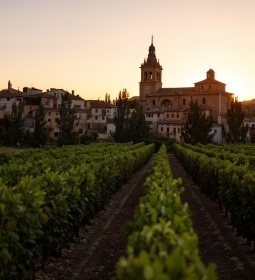Every year, the non-profit organization Green Destination identifies 100 places on the planet that are most actively introducing ecology into their daily life and, in particular, tourism, making the country more environmentally friendly, attractive and responsible. By and large, it is the initiative, efforts and progress that are taken into account, because a 100% environmentally friendly place still does not exist. We will tell you about 10 leading directions that have won honor and respect in 2021.
Australia
- Lord Howe Island
- Townsville
- Port Douglas.
Port Douglas is the only place in the world where reefs and rainforest coexist (both are included in the World Natural Heritage List). From the Great Barrier Reef (the world's largest!) To the forest along the Daintree River (over 125 million years old), tourists come here to bask on Four Mile Beach , swim with turtles and exotic fish, and watch southern cassowaries and combed crocodiles. Daintree Forest is one of the most biologically diverse regions in the world.
Romania
- Natural Park Vanatori-Nyamt
Remnants of the ancient culture of Cucuteni , medieval monuments , ruins from the Second World War, monastic villages in the "Romanian Athos" - and, of course, the " Land of the Bison ", which succeeded. An experiment to re-colonize bison in the wild, maternal nature has been successfully carried out here: in the last 5 years alone, 15 little bison have appeared!
In Vanatori-Nyamt there are more than 3000 species of animals and plants, mountains, hills and plants are replaced, there is an ancient source of salt water (geologists say that it is at least 8000 years old).
Slovenia
- Bled
- Brda
- Ljubljana
- Rogaška Slatina
- Miren
- Valley of the Soča River
- Logar Valley
- Podchetrtek
- Kochevsko.
Kochevsko forest is a place where you can meet many animals: brown bear, lynx, roe deer, fox, wolf, deer, wild boar, birds and small animals, colorful fish in the local lake. Moreover, the animals are cautious, but not frightened: many can be seen and photographed during a standard guided tour.
Chile
- Puerto Natales
The capital of the province of Ultima Esperanza on the banks of the Senoret Canal at the foot of Patagonia. Tourists come here to the Torres del Paine National Park , the Cueva del Milodon Natural Monument , the Riesco Mountain Range, the Southern Ice Field and the Paine Massif .
The town itself is very small (only 15,000 people), but as a tourist center it is developed and important. The government itself is promoting it as a center for sustainable tourism and a place for the conservation of indigenous peoples and nature.
New Zealand
- Cove of Plenty
125 kilometers of coastline, 2 nature reserves, 24 islands in coastal waters, beaches and the large national park Virinaki te Pua-a-Tane . Local residents strive to simultaneously develop tourism and preserve the value of the local land, their way of life, nature and culture of the indigenous people - Maori .
Taiwan
- Northeast coast
- Yilan County
- Lake of the Sun and Moon.
The country's specialty is the development of tourism with low carbon emissions. A hydroelectric power plant, one of the largest and most important in the country, has been built on the Lake of the Sun and Moon, and tourists are entertained by rope parks, cable cars, bicycle paths and electric boats.
Ecuador
- Galapagos Islands
- Community of the Anangu Kichwa tribe.
The community in the Yasuni National Park (included in the UN list as a biosphere reserve) boasts an amazing natural diversity:
- 600 bird species
- 2000 - trees
- More than a million species of insects (!)
- 173 species of mammals
- Over 120 - reptiles
- 150 - amphibians and amphibians
- 250 species of fish.
The “natural diversity” is complemented by the indigenous Anangu tribe : from the moment of their appearance, they respected both culture and social traditions (and foreign tribes as well). Even to foreign tourists, they are ready to show their rituals to protect the nature of the Amazon and teach them to respect it. For example, you can see clay cliffs on which local birds willingly hang out, take a walk with a guide through the unthinkable green of the jungle, walk along the hinged grass / tree bridges, swim along the streams in a small canoe, watch the local shamanic ritual, listen to the legends and stories of Anangu, try local weird delicacies.
Solar panels are actively used in the region, waste is sorted and used water is re-purified.
Finland
- Fiskars village
- Posio region.
In Posio should go even tempted ekoputeshestvennikam. Riisitunturi National Park , established in 1982, protects the marshes on the slopes of the local hills; Lake Livo will delight you with its beaches, and the waterfall in the Korouoma canyon (depth up to 130 meters) - the largest of the frozen ones - will delight you with its scale. There is a 30 km route along the Korojoki River , showing several waterfalls, gorges and a nature reserve. Syöte National Park will show you a whole chain of old forests (stretching as far as several local municipalities-districts), and in Livoyarvi and Kitka lakes you can fish in crystal clear waters (don't forget about the license!).
USA
- Breckenridge (Colorado)
- Vail (Colorado)
- District of Transylvania (North Carolina).
Brevard in the heart of the Blue Ridge is adjacent to the Pisgah and Nantahall National Forests, Dupont, Headwaters and Gorge Park . Here is the French Brod River (the third oldest in the world, according to geographers and geologists) and Looking Glass , the largest rock monolith (if we consider the regions east of the Mississippi). Transylvania County is the real American land of waterfalls: there are over 250 here already!
Japan
- Miura Peninsula
- Kyoto
- Niseko city
- Okinawa prefecture
- Shirakawa village
- Kamaishi city.
In Kamaishi, you can combine the acquaintance with the ocean coast and mountains. In 2011, the city was badly damaged by an earthquake, so now only 33 thousand people live here, but now it is actively recovering - and at the same time strengthening its position in ecotourism: it uses renewable energy sources, calls for the reduction of solid waste, even pays those residents who use household (for example, for heating) vegetable fuel or solar energy.












